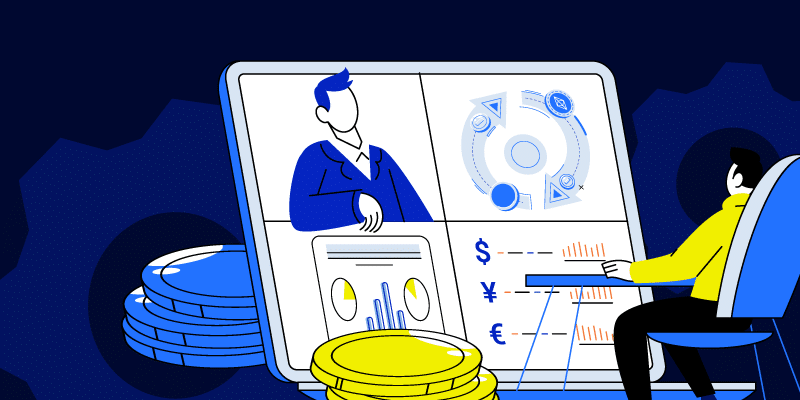How to manage your SaaS spend in 3 easy steps
March 13, 2024
4 minute read

The appeal of SaaS is that you don’t have to mess with hardware, updates, or tech bugs – the SaaS provider does that for you. But it’s not all sunshine and roses.
Considering the average company uses 112 SaaS apps (2024 State of SaaS, coming soon!) , we need an easy and effective way to manage it.
SaaS management goes beyond contracts and licensing agreements. At the end of the day, money makes the world go round. How can your business spend less on SaaS without sacrificing the necessary tools you need to get the job done? Enter SaaS spend management.
How to manage your SaaS spend
There’s a big difference between saying you want to save money and actually doing it. The key is finding actionable steps you can take to get the ball rolling. These three tips will allow you and your team to dive into common SaaS spend mistakes and fix them.
1. Eliminate duplicate and obsolete programs
Did you know that more than $40 billion is spent on unused SaaS tools each year?
It’s true. Companies are throwing away billions of dollars in budget on outdated, underused, and duplicate SaaS programs. That’s why your primary concern for curbing SaaS spend is taking inventory of everything your company is currently using before moving forward.
$40 billion on average, is wasted by businesses on unused SaaS tools every year.
Source: G2
Chances are your company is using multiple programs that do the same work or you might even be paying for software that nobody uses at all. Sit down with the key stakeholders in each department and find out the current state of your SaaS.
Create a list that answers the following questions:
- Which products are you paying for?
- What function do they provide?
- Is this program obsolete or out of date?
- How much do they cost?
- How many people use them?
- Is it duplicate to another program you pay for?
- When does the contract expire?
Once you answer these questions you can begin to determine which products you absolutely need and which can be eliminated. In some cases you might consolidate SaaS services. This strategy will eliminate the bulk of your SaaS waste right away.
2. Understand your SaaS contract
One of the biggest mistakes people make with SaaS spend is with their license management.
Many businesses are so preoccupied with getting the best deal they can on the price that they ignore other parts of their contract. Things like termination fees, auto-renewals, and SLA can cost you money if you’re not paying close enough attention. What looks like a good deal upfront can quickly spiral out of control. Let’s go over some of the key features of SaaS contracts that you should pay attention to before signing on the dotted line.
Effective date
The effective date of your contract is when your contract actually kicks in. For some businesses, your effective date is the same day you sign your contract. But for others, you might have to wait until the first of the month or the start of the quarter.
Don’t assume your effective date is the same day you sign your contract. Check with your SaaS provider before making any decisions. Carelessness with your contract management at this stage could leave you without a service for days or even weeks. Never cancel an old SaaS service without making sure you’re covered by your new effective date first.
Contract term
A contract term is simply the length of time the contract you signed is in effect. If you’re hoping to make changes to your current contract, most companies will make you wait until your contract term has expired. Always review the details around your contract term before signing any paperwork. It’s also important to know when your contract is ending before making big decisions.
Contract termination window
Are you up a creek without a paddle once you’ve signed a contract? Not necessarily.
Some contracts have a built in termination window that allows you a grace period to cancel your contract without any penalties. Not all contracts have this built-in. You’ll need to check with your SaaS provider to see if there’s a termination window within your agreement.
SLA
The service level agreement (SLA) is one of the most important parts of your contract. It sets the standard for the service you’ll be receiving for the duration of your partnership.
Your SLA outlines your expectations from the vendor, metrics by which service is measured, expected timelines, and penalties should either party fail to deliver.
This is the ultimate CYA section of your contract. Without a well-structured SLA portion of your contract, a vendor could legally keep you on the hook for a contract where they deliver nothing. It’s crucial to always double-check the SLA agreement before signing anything.
Related: Dealing with a vendor violating your agreement? Learn how you can remedy a breach of contract.
3. Invest in a SaaS management platform (SMP)
Managing your SaaS spend is more than just a one time occurrence.
Losing track of your expenses and spending excessive time on mundane tasks is a surefire way to waste money.
That’s why investing in a SaaS management platform (SMP) is a crucial, time-saving final step.
Eliminating duplicate SaaS programs and fine tuning your contracts is just barely scratching the surface of a SaaS management platform (SMP).
With a SMP, you can:
- Automate ULM (User Life Management) events such as onboarding and offboarding employees
- Centralize control over SaaS licenses and monitor product utilization
- Facilitate SaaS contract management
- Track spending and forecast the costs of SaaS subscriptions
- Protect against the sharing of sensitive company data
- Set up user roles and granular permissions automatically
No more missing contract deadlines or playing catch up when a new employee starts. With a SaaS system of record like BetterCloud, you can start saving time and money by eliminating needless SaaS spend and tedious tasks. Your team can securely sync accounting, financial, IT, and single sign-on systems in one setting.
No matter the size of your company, a SaaS management tool can make your job and your life a lot easier!
Spend less, save more with a SaaS management platform
The key to eliminating SaaS waste is working ahead, staying on top of your contracts, and always looking toward the future.
To learn more about how BetterCloud can help you manage your SaaS spend, request a demo.






